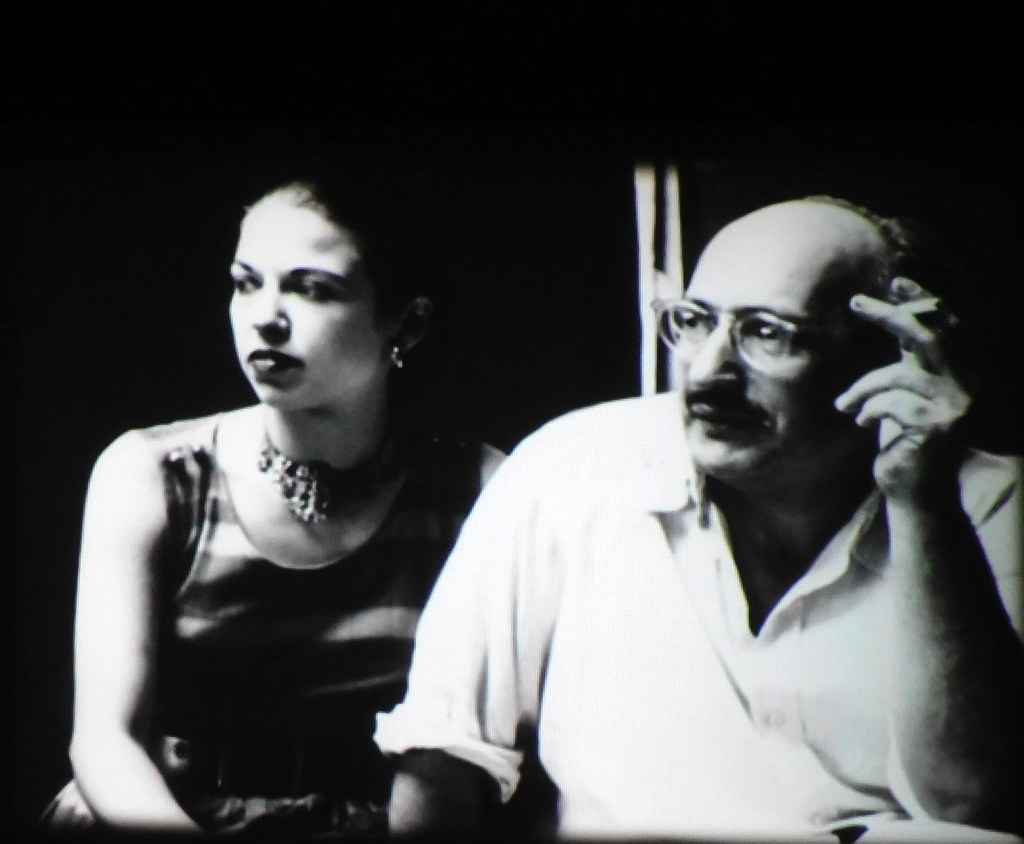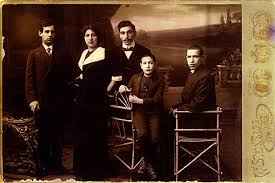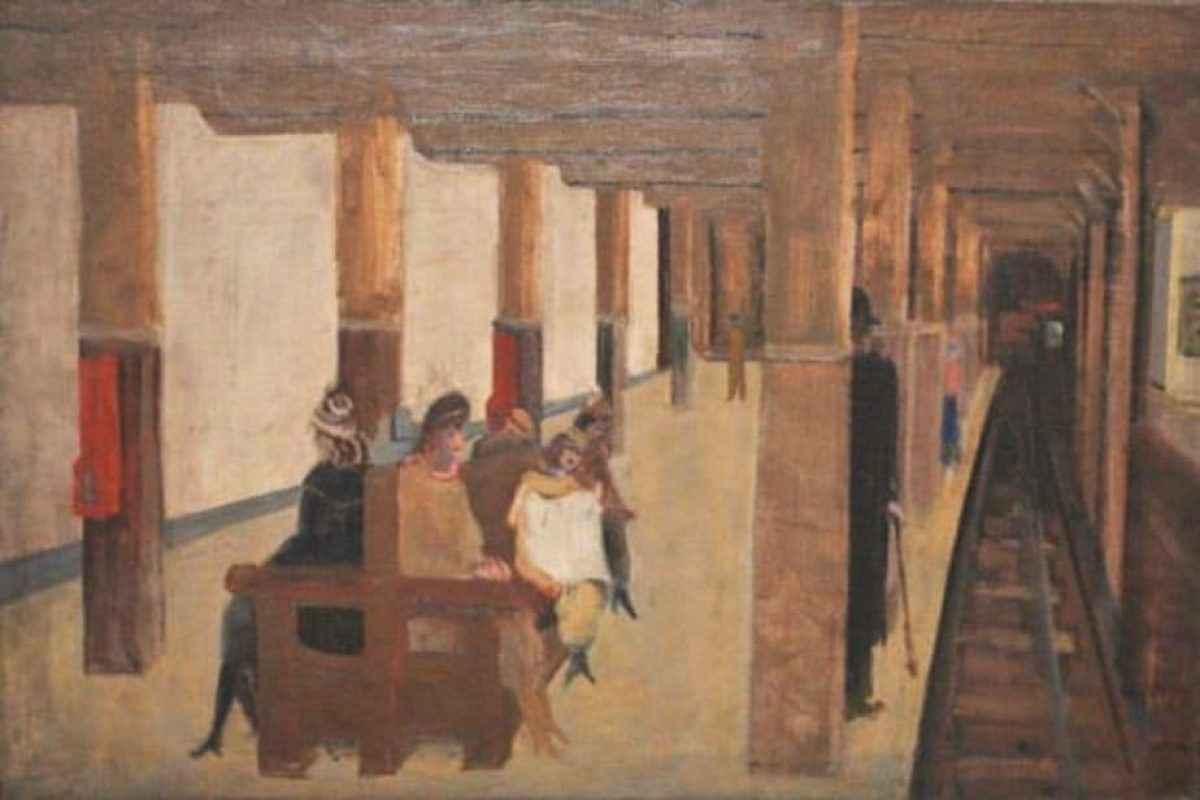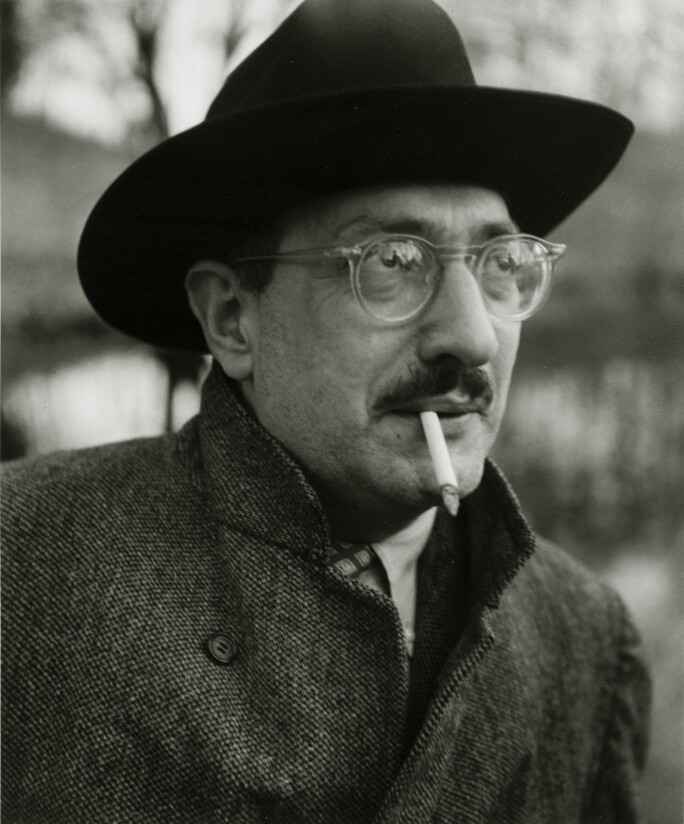Who is Mark Rothko?
Mark Rothko (born Markus Yakovlevich Rothkowitz; September 25, 1903 – February 25, 1970) was a Latvian-American painter renowned for his profound contributions to abstract expressionism and color field painting. His signature works feature large, luminous rectangles of color that evoke deep emotional responses, aiming to express fundamental human emotions such as tragedy, ecstasy, and doom. Though Rothko resisted classification, his art became emblematic of postwar American modernism. He was deeply invested in the spiritual and emotional power of art, often stating that his paintings were meant to be experienced as intimate, meditative encounters.
Personal Life
Mark Rothko’s personal life was deeply intertwined with his emotional and intellectual pursuits. He married Edith Sachar, a jewelry designer, in 1932. Their marriage, however, was strained due to Rothko’s growing artistic ambitions and financial instability, leading to their divorce in 1943.
In 1944, Rothko married Mary Alice “Mell” Beistle, a more stabilizing presence in his life. Together they had two children, Kate and Christopher Rothko. Despite a period of personal contentment, Rothko suffered from periods of severe depression throughout his life, exacerbated in later years by health problems and intense professional pressures.
His mental health struggles culminated in his tragic death by suicide on February 25, 1970, in his New York studio. Rothko’s death sent shockwaves through the art community and led to a highly publicized legal battle over his estate, known as the Rothko Case.

Childhood
Mark Rothko’s childhood was shaped by hardship and resilience. Born in Dvinsk, Russian Empire (now Latvia) in 1903, he grew up in a Jewish family during a time of rising anti-Semitism. His early years were filled with intellectual stimulation, as his father, Jacob Rothkowitz, emphasized education. In 1913, fearing persecution, the family emigrated to Portland, Oregon. Just months after arriving, tragedy struck when his father died, leaving the family to face new hardships in a foreign land. Nevertheless, young Mark excelled academically, quickly learning English and displaying a sharp intellect that later fueled his artistic and philosophical pursuits.
Love Story
Mark Rothko’s love life was marked by two significant relationships. His first marriage, to Edith Sachar in 1932, was driven by mutual creativity and ambition, but financial strains and Rothko’s intense dedication to his art eventually caused their separation in 1943. His second marriage, to Mary Alice “Mell” Beistle in 1944, was deeper and more enduring. Mell provided emotional support during Rothko’s rise to fame and during his darker years of depression. Together, they built a family, raising two children, and shared a complex, often strained but deeply bonded relationship until Rothko’s death in 1970.
Early Life and Education
Mark Rothko, born Markus Yakovlevich Rothkowitz on September 25, 1903, in Dvinsk, then part of the Russian Empire (now Daugavpils, Latvia), was the youngest of four siblings in a Jewish family. His father, Jacob Rothkowitz, was a pharmacist and intellectual who encouraged his children’s academic pursuits. Early life in Russia was turbulent; growing anti-Semitism forced the family to seek a better life abroad.
In 1913, when Mark was ten, the Rothkowitz family emigrated to the United States, settling in Portland, Oregon. Tragically, Jacob died just months after their arrival. Despite this loss, Mark thrived academically, learning English quickly and excelling in school. He graduated from Lincoln High School in Portland and won a scholarship to Yale University in 1921. However, he found Yale’s atmosphere elitist and repressive, and left without graduating after two years.
Determined to pursue art, Rothko moved to New York City in 1923. He briefly studied at the Art Students League of New York under the guidance of the respected modernist Max Weber, where he embraced modernism and was introduced to the philosophical foundations that would later influence his artistic vision.
Family
Mark Rothko came from a tight-knit Jewish family committed to education and cultural values. His father, Jacob Rothkowitz, instilled in Mark an early appreciation for intellectual pursuits. His mother, Anna Goldin Rothkowitz, supported the family after Jacob’s death by working as a seamstress. Rothko maintained a close relationship with his siblings throughout his life.
Rothko’s own family life with his second wife, Mell, was a source of both inspiration and tension. His daughter, Kate Rothko Prizel, and son, Christopher Rothko, became active in protecting and promoting his artistic legacy after his death. His family later played a crucial role in legal battles ensuring his work remained preserved and honored.

🧾 Detailed Biography Table
| Field | Details |
|---|---|
| Full Name | Markus Yakovlevich Rothkowitz |
| Known As | Mark Rothko |
| Birth Date | September 25, 1903 |
| Birthplace | Dvinsk, Russian Empire (now Daugavpils, Latvia) |
| Death Date | February 25, 1970 |
| Death Place | New York City, U.S. |
| Nationality | Latvian-American (naturalized in 1938) |
| Parents | Jacob Rothkowitz (father), Anna Goldin Rothkowitz (mother) |
| Height | Approximately 5 ft 10 in (178 cm) |
| Spouses | Edith Sachar (1932–1943), Mary Alice “Mell” Beistle (1944–1970) |
| Children | Kate Rothko (b. 1950), Christopher Rothko (b. 1963) |
| Education | Yale University (attended), Art Students League of New York |
| Art Movements | Abstract Expressionism, Color Field Painting |
| Notable Patrons | Peggy Guggenheim, John and Dominique de Menil |
| Estimated Net Worth (2025) | Posthumously, Rothko’s estate is valued at over $1 billion, with individual paintings selling for up to $186 million. |
Career
Mark Rothko’s career is marked by constant evolution, from figurative beginnings to the heights of abstract expressionism.
Early Career (1920s–1930s)
In the 1920s, Rothko’s paintings were largely figurative, focusing on urban life and street scenes. His early exhibitions in New York revealed a strong influence from modernist thinkers and artists. Alongside artists like Adolph Gottlieb and Barnett Newman, Rothko participated in artist groups that sought to establish a distinctly American style of modern art.
Development of Style (1940s)
By the 1940s, Rothko began experimenting with abstract forms inspired by mythology and psychology. Influenced by Surrealists and the writings of Carl Jung, Rothko sought to express universal human emotions through symbolic and abstract imagery. This period led to the creation of his famous “multiforms” — early versions of the large, color-saturated canvases he would later perfect.
Mature Period (1950s)
In the 1950s, Rothko reached his mature style: luminous, floating rectangles of color stacked on immense vertical canvases. Works like “No. 61 (Rust and Blue)” and “Orange and Yellow” exemplify this period. Rothko intended his paintings to envelop viewers emotionally and spiritually, often demanding that his canvases be hung low and close together for maximum effect.
His major commissions during this period include the Seagram Murals for the Four Seasons Restaurant (which he ultimately refused to deliver) and the Rothko Chapel in Houston, Texas, a space dedicated to contemplation and featuring 14 of his monumental works.
Late Career and Decline (1960s–1970)
Despite his success, Rothko became increasingly disillusioned with the commercialization of his art. His later works grew darker both in palette and theme, with many paintings dominated by deep reds, blacks, and browns. He suffered a serious aortic aneurysm in 1968, which limited his mobility and further exacerbated his depression.
By 1970, Rothko had become isolated, both physically and emotionally. On February 25, he died by suicide, leaving behind a complex legacy that continues to influence generations of artists.

📊 Mark Rothko Career Table
| Period | Career Highlights | Notes |
|---|---|---|
| 1920s | Early Figurative Paintings | Painted urban scenes and portraits; influenced by modernists like Max Weber. |
| 1930s | Mythological and Surrealistic Influences | Inspired by mythology, Freud, and Jung; co-founded “The Ten” artist group. |
| 1940s | Transition to Abstract Forms | Developed “multiforms” with biomorphic shapes; deeply explored human emotion. |
| Late 1940s – 1950s | Mature Style: Color Field Paintings | Created iconic large canvases with soft-edged rectangles; emotional/spiritual experiences. |
| 1958–1959 | Seagram Murals Commission | Commissioned by Four Seasons; Rothko later rejected it and donated the murals to museums. |
| 1960s | Rothko Chapel Paintings | Produced dark, meditative murals for the Rothko Chapel in Houston, Texas. |
| Late 1960s – 1970 | Final Works and Decline | Palette darkened (black, maroon); health issues and depression worsened; died in 1970. |
🎨 Artistic Career and Legacy
Rothko’s early works in the 1920s and 1930s were representational, depicting urban scenes and interiors. By the 1940s, influenced by mythology and Surrealism, he transitioned to abstract forms. His mature style, developed in the late 1940s, featured large canvases with soft-edged rectangles of color, aiming to evoke emotional and spiritual experiences.
Notable commissions include the Seagram Murals (1958–59), intended for the Four Seasons Restaurant in New York but ultimately donated to museums, and the Rothko Chapel in Houston, Texas, a non-denominational space housing 14 of his paintings. Despite his success, Rothko struggled with depression, leading to his suicide in 1970.
📊 Social Media Accounts Table with Official Links
| Platform | Official Link |
|---|---|
| @rothkochapel | |
| @rothkochapel | |
| Rothko Chapel | |
| Website | rothkochapel.org |
Note: As Rothko passed away in 1970, he does not have personal social media accounts. The Rothko Chapel maintains active profiles to honor his legacy.
📰 Latest News: Child Damages €50M Rothko Painting in Rotterdam
On April 25, 2025, a Mark Rothko painting titled Grey, Orange on Maroon, No. 8, valued at approximately €50 million ($56 million), was damaged at the Boijmans Van Beuningen Museum in Rotterdam, Netherlands. The incident occurred when a child, during an unsupervised moment, touched the artwork, resulting in visible scratches on the unvarnished paint layer. Museum officials have not disclosed the identity of the child or their guardians and have refrained from commenting on who will bear the restoration costs.
📏 Height and Physical Appearance
Mark Rothko stood approximately 5 feet 10 inches (178 cm) tall. Photographs from his lifetime depict him as a slender man with a contemplative demeanor, often dressed in simple attire. His appearance reflected his introspective nature and dedication to his art.
Rising stars across various fields continue to capture public attention. For example, in the world of snooker, Luca Brecel has made headlines with his remarkable performances and championship victories. To learn more about his inspiring journey and achievements, you can explore his full biography here. Meanwhile, in the realm of football, former Liverpool and England striker Daniel Sturridge remains a prominent figure known for his impressive skills and contributions to the sport. An in-depth look at his career, personal life, and recent updates can be found at Echo Biographies.
💰 Net Worth as of 2025
While Rothko lived modestly during his lifetime, the value of his artwork has soared posthumously. In 2014, his painting “No. 6 (Violet, Green and Red)” sold for $186 million. As of 2025, his estate is estimated to be worth over $1 billion, with his works continuing to command high prices at auctions.
🏛️ Legacy and Influence
Mark Rothko’s influence on modern art is profound. His exploration of color and emotion paved the way for future generations of artists. Institutions like the Rothko Chapel in Houston serve as enduring testaments to his vision, offering spaces for contemplation and spiritual reflection. His works continue to be exhibited worldwide, inspiring audiences with their depth and intensity.
FAQS
What is so special about Mark Rothko?
Mark Rothko is special for creating emotionally powerful paintings using large, luminous rectangles of color, aiming to evoke deep human emotions like tragedy, ecstasy, and serenity.
What painting was sold for $46.5 million?
Mark Rothko’s painting Untitled (Yellow and Blue) was sold for $46.5 million at a Sotheby’s auction in 2015.
Why is Rothko so expensive?
Rothko’s work is expensive due to its profound emotional impact, historical significance in Abstract Expressionism, rarity, and strong demand among top art collectors.
What was Mark Rothko diagnosed with?
Mark Rothko struggled with depression and health issues, particularly after being diagnosed with an aortic aneurysm in the late 1960s.


